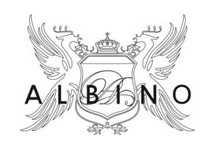Albino
Apparel
The brand was first presented in Milan in 2004, fruit of the synergy between the Parisian-trained Roman stylist, Albino D’Amato, and the Neapolitan designer architect, Gianfranco Fenizia, whose bac...
The brand was first presented in Milan in 2004, fruit of the synergy between the Parisian-trained Roman stylist, Albino D’Amato, and the Neapolitan designer architect, Gianfranco Fenizia, whose background includes consultancy work for important fashion brands. The decision to present the brand to Parisian clients, starting from its debuting s/s collection 2005, in an art gallery in the area of Place des Vosges, is indicative of the type of mark the two partners have wished to confer on this brand: a collection melding the exclusive sartorial workmanship of what is known as "made in Italy" with an allure that can only be Parisian, and which is strongly reminiscent of traditional Couture. The second season, Autumn Winter 2005-06, sees a growth in the brand’s international clientele from 3 to 20 stores, confirming the interest for a product with a somewhat elevated image, yet endowed with an original freshness, capable of capturing the attention of international customers who appreciate this personal and unmistakeable style, from the States to Japan, as well as Hong Kong, and of course Europe. Albino D’Amato handles the creative side of the project, while Gianfranco Fenizia looks after the organisational aspects, directly from the dedicated space in via Gallina 11 in Milan which, already the location of the Fenizia design practice, has become the centre in which the project is first created and, even more recently, the official showroom premises.Brand Details
Founder
Albino D’Amato
Designer
Gianfranco Fenizia
from
2004to
PresentBrand Strategy
Market segment
Premium
Core business
Apparel
Targets
Women
The financial data for this brand is limited.
Contact us for income statementOur team will check for the data and get back to you shortly.
